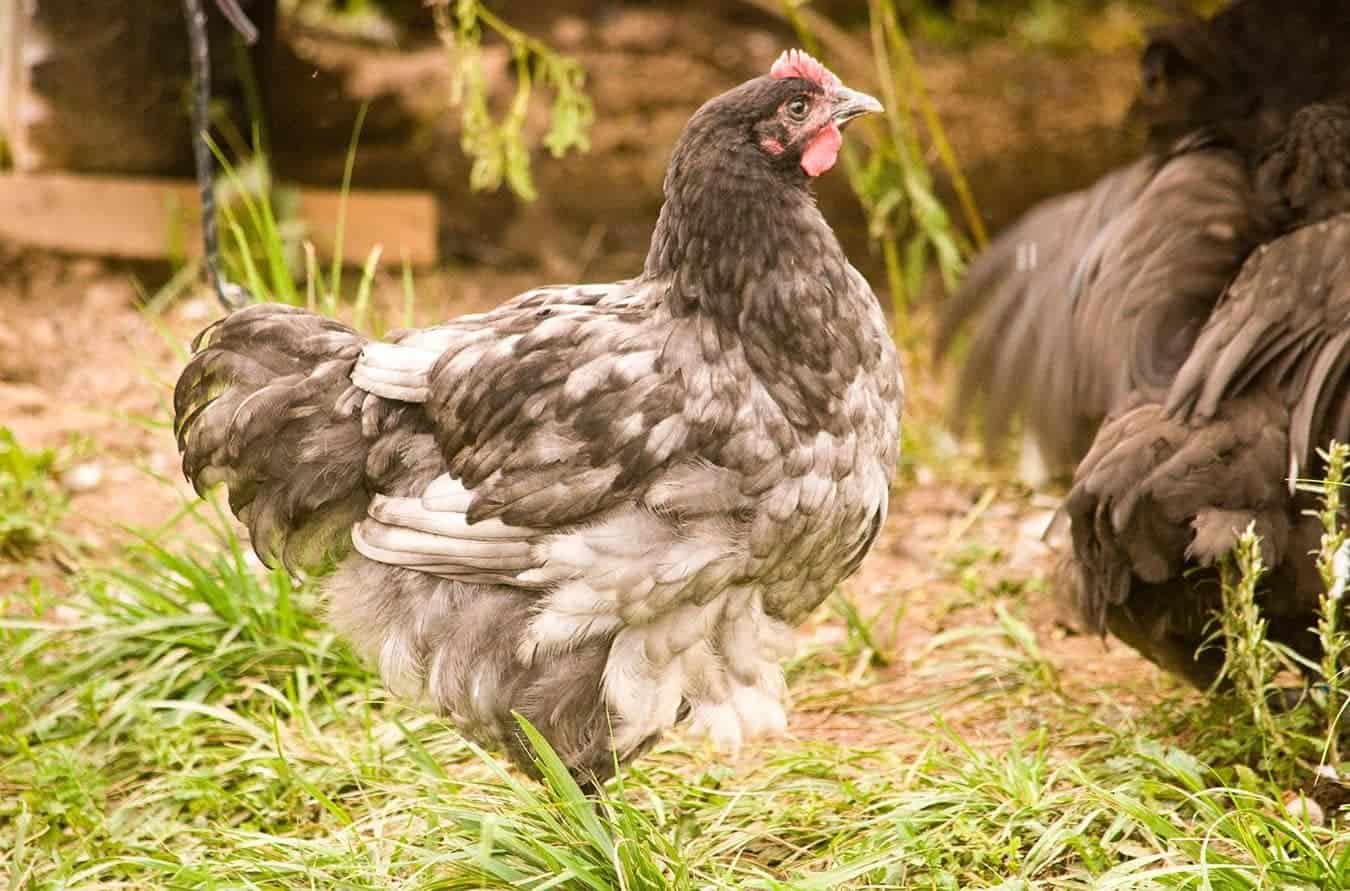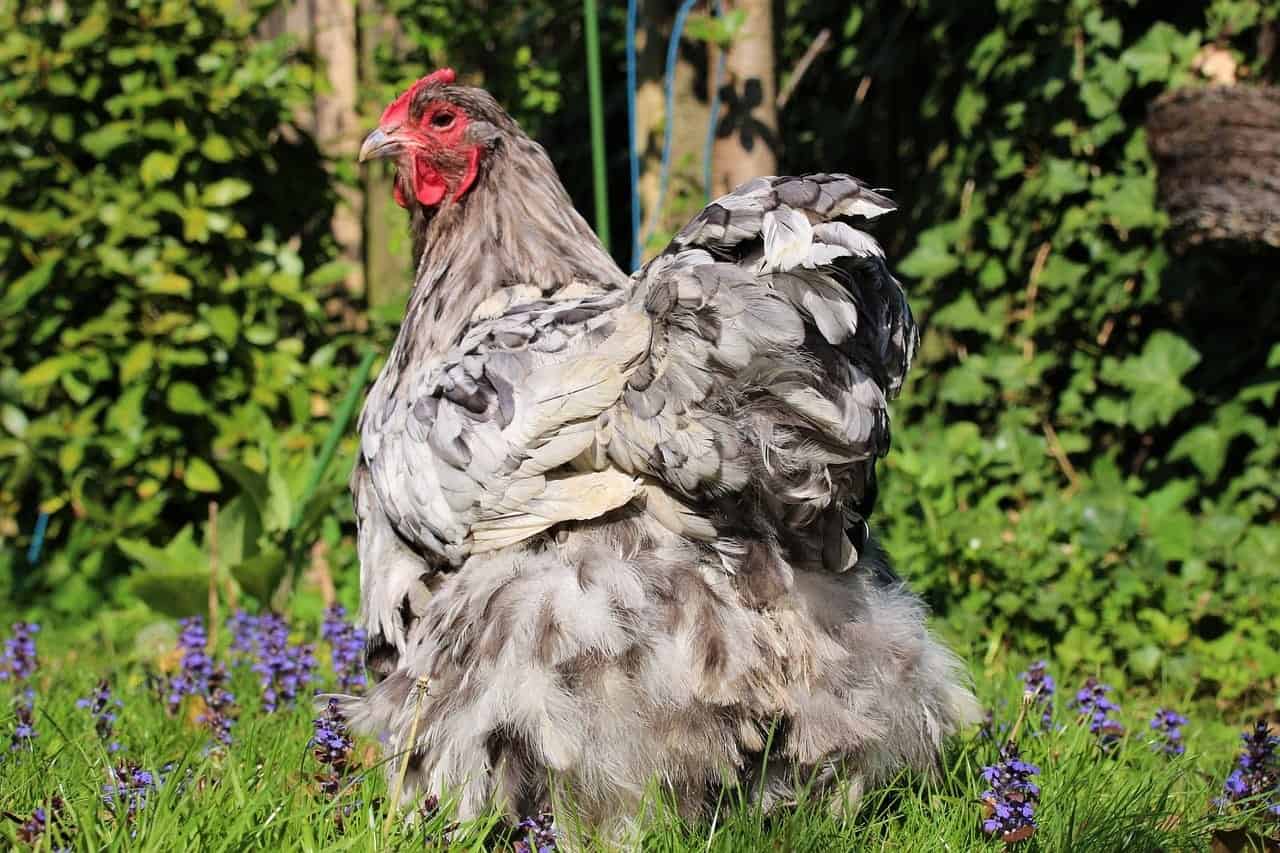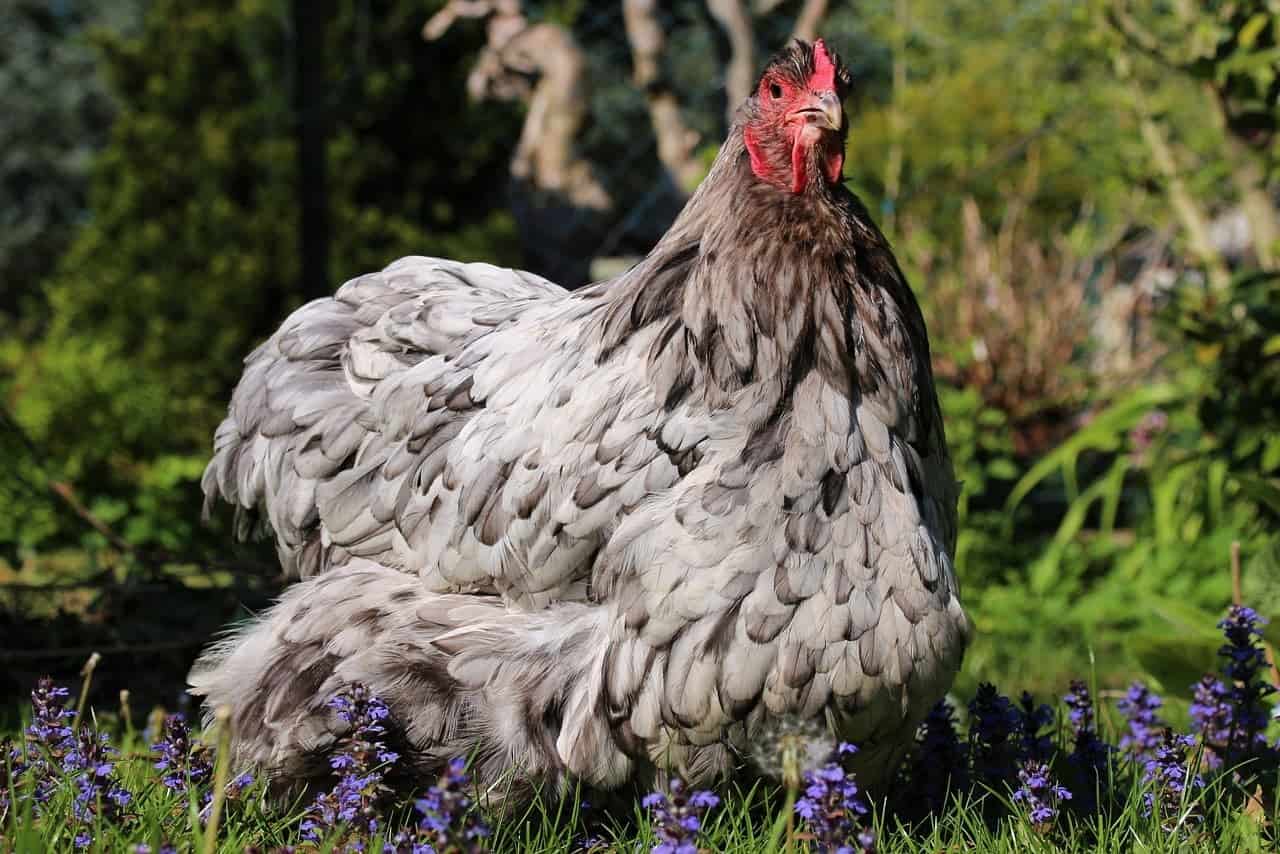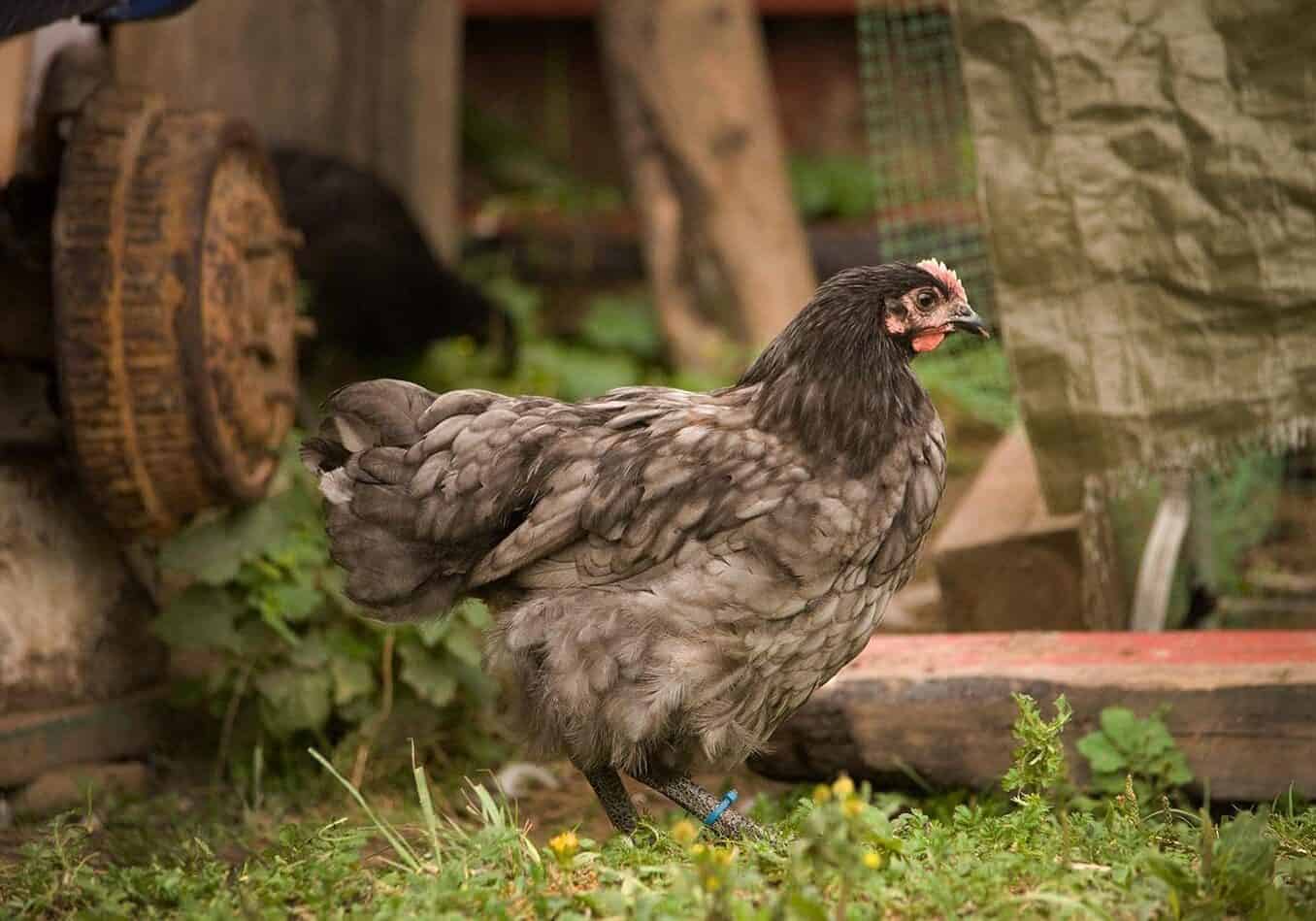First developed in England, the Orpington chicken can be found living on farms and in backyards all around the world today. These laidback chickens are known for being great egg layers and are prized as friendly animals that are easy to get along with and rear.
Blue Orpingtons have big, fluffy feathers that make them look chubby. These chickens are fun to watch and can be easily handled if done so from a young age. Here is everything you need to know about the Blue Orpington chicken.

Quick Facts About Blue Orpington Chickens
| Species Name: | Gallus gallus domesticus |
| Family: | Phasianidae |
| Care Level: | Moderate |
| Temperature: | Highly various |
| Temperament: | Docile, friendly, protective |
| Color Form: | Blue, black, splash |
| Lifespan: | 8-10 years |
| Size: | 7-8 pounds |
| Diet: | Grains, fruit, veggies, table scraps, scratch |
| Minimum Coop Size: | 8 square feet |
| Coop Set-Up: | Coop, run, feed area |
| Compatibility: | Moderate |
Blue Orpington Chicken Overview

These chickens are fun-loving and act more like pets than farm animals when they are used to being around people. They will run to greet those who visit and feed them, and they typically do not mind being held and handled. The Blue Orpington loves to eat, which can result in obesity if they are free to feed all day.
Their thick feathers keep them warm in cool weather, but they require shade and water to stay cool in warm weather. Each chicken can lay more than 200 eggs a year, which are light brown in color. These hardy birds do not succumb easily to disease, making them cost-effective producers of food.

How Much Do Blue Orpington Chickens Cost?
You can buy a Blue Orpington chicken for somewhere between $10 and $25, depending on where you buy one from. If you want to buy multiple chickens at the same time, you may be able to get a discount. When calculating the overall cost of buying a chicken of any kind, it is important to factor in a chicken coop, feed, and initial veterinarian fees.
Appearance & Varieties

Orpington chickens come in a variety of colors, but a Blue Orpington chicken will only grow bluish-grey feathers, which give them a strikingly rich look. Their feathers are thick, giving them all the protection that they need to stay safe and warm during the winter months.
These chickens have sturdy, short legs and a strong strut that makes them look like they are on a mission whenever they walk around. Their tail feathers are full and look like dusters at the end. Their heads are compact and look a little too small for their bodies, which lends to their comical disposition.
Typical Behavior & Temperament
Blue Orpington chickens are outgoing, social, curious, and interactive creatures. But they are docile and gentle too, which makes them easy to handle. These chickens are not that independent, so they do best when living with other chickens. Roosters are typically as friendly as the hens, but they can be more territorial.

How to Take Care of Blue Orpington Chickens
Caring for these chickens requires about the same type of commitment as caring for any other type of chicken. They can free-range if they are protected from possible predators. If predators are too much of a concern, the chickens can be kept inside of a caged coop. A proper diet, daily exercise, and plenty of attention are also necessary for optimal health and high quality of life.
Habitat, Coop Conditions & Setup
Blue Orpington chickens can free-range or be kept in coops. If free-ranging, their area should be surrounded by sturdy fencing that will keep stray dogs and wild predators away from them. Coops should have at least 6 square feet of living and moving space for each chicken living within it. The chickens should also be provided with an attached enclosed run for exercise.
Bedding
You can put mulch or wood chips in your chicken’s coop, but it is not necessary. The chickens will scratch and peck at the ground, and any bedding that you put in the coop will be quickly pushed away. Chickens will essentially make their own bedding with the grass and dirt that they dig up from the ground.
Lighting
Blue Orpington chickens typically bed down by dusk. However, they are awake by dawn, and roosters may start crowing even before that. The bottom line is that they live by the sunlight, so there is no need to provide them with supplemental lighting when the sun goes down.

What to Feed Your Blue Orpington Chickens
Daily feeding of grains, commercial scratch, vegetable scraps, and fruit pieces is necessary for good health. However, your Orpington chickens should never be fed unlimited amounts of food, or you will likely find them hanging around the feeder all day doing nothing but eating. Feed each bird about ¼ cup of feed and/or grains each day, as well as ¼ cup of vegetable and fruit chunks.

Keeping Your Blue Orpington Chickens Healthy
Aside from properly feeding your chickens and making sure that they stay protected from predators, your chickens should be dewormed regularly. You should be able to find worming medications at a local pet shop or your veterinarian’s office. Checkups are not necessary, but vaccinations may be, depending on the types of illnesses and diseases that are common in your area.
Do Blue Orpington Chickens Get Along With Other Pets?
While these chickens can get along with other breeds of chickens, they can be timid when it comes to being around cats and dogs. If friendly dogs can spend time near their habitat regularly while your chickens are still young, they could become accustomed to the dog and interact with them when necessary.

Are Blue Orpington Chickens Suitable for You?
If you are looking for an easy-to-care-for chicken breed that is friendly and productive, consider the Blue Orpington. They are gentle yet interactive, they reliably lay tasty eggs, and they do not need tons of space to thrive. Do you think this breed is right for your farm or homestead? Why or why not? We want to hear from you!
Featured Image Credit: Erozarka, Shutterstock
